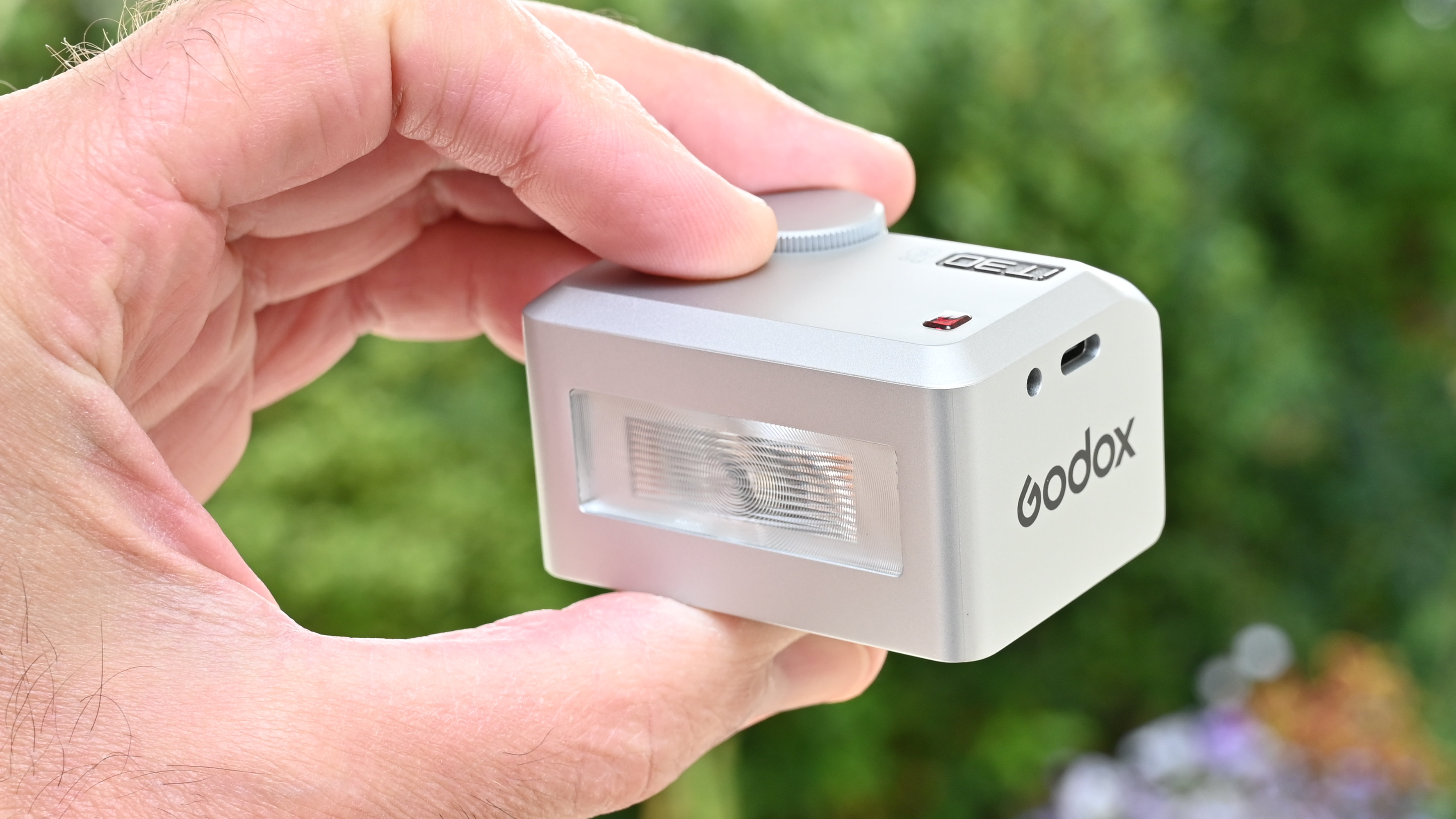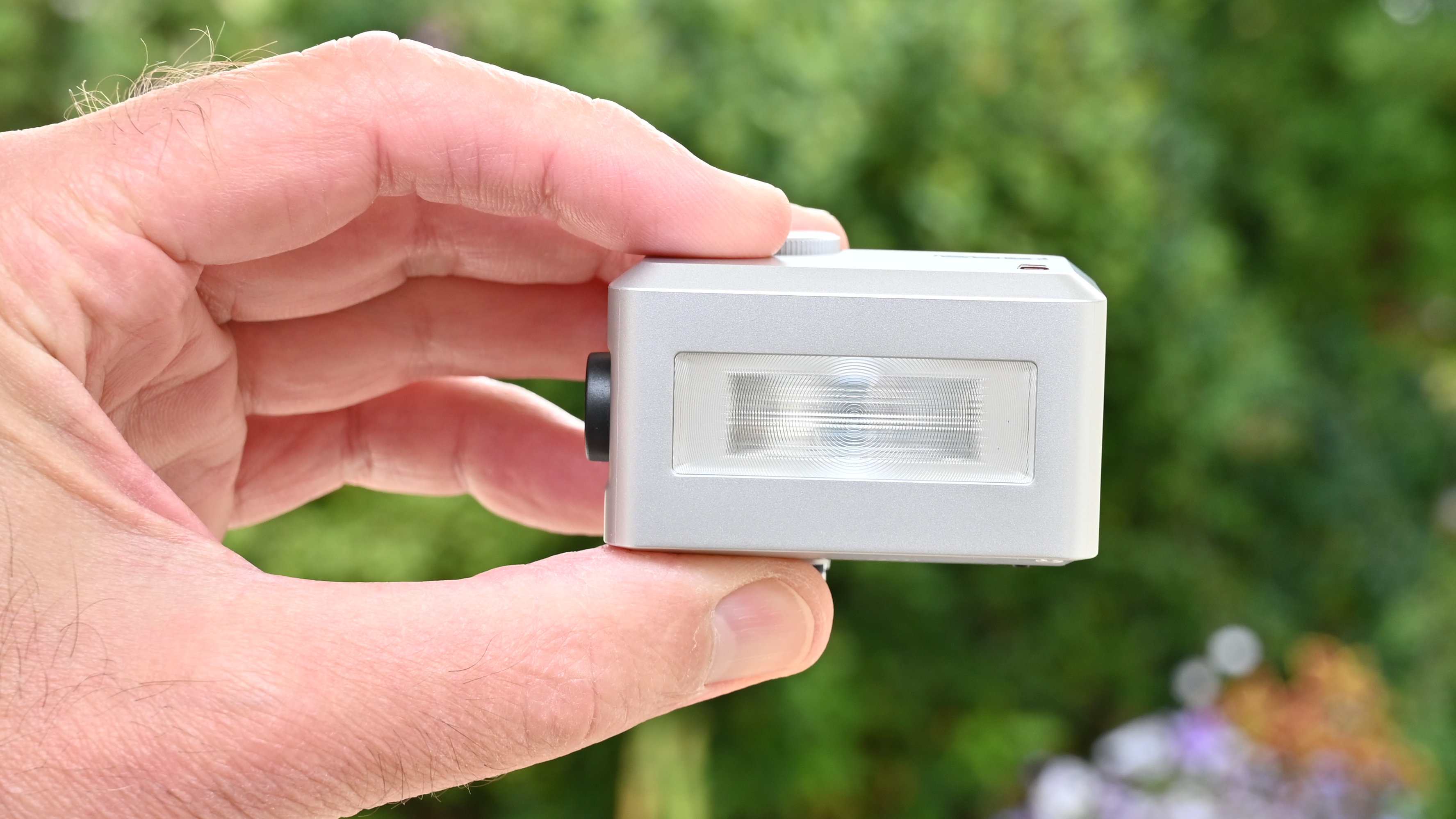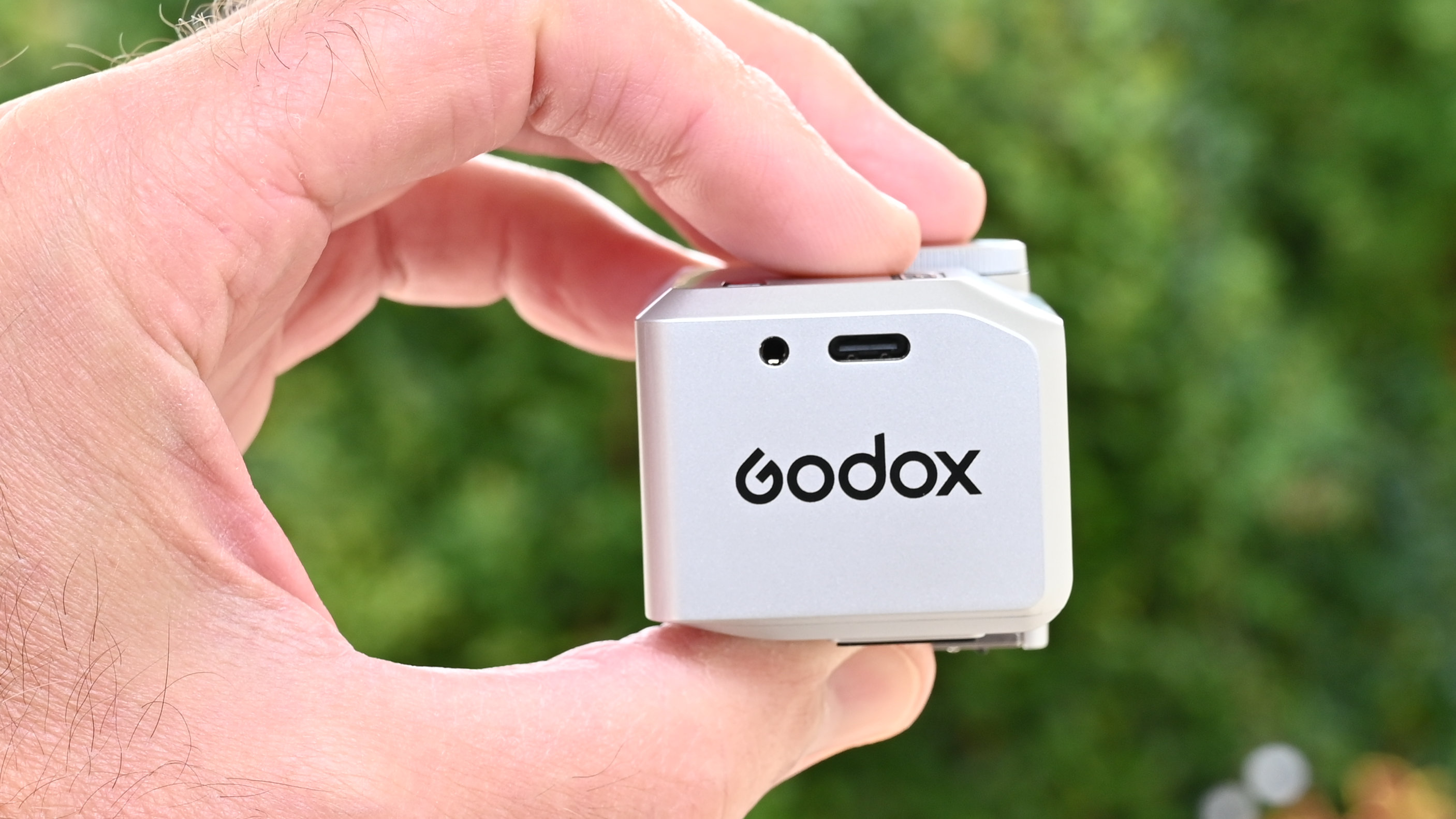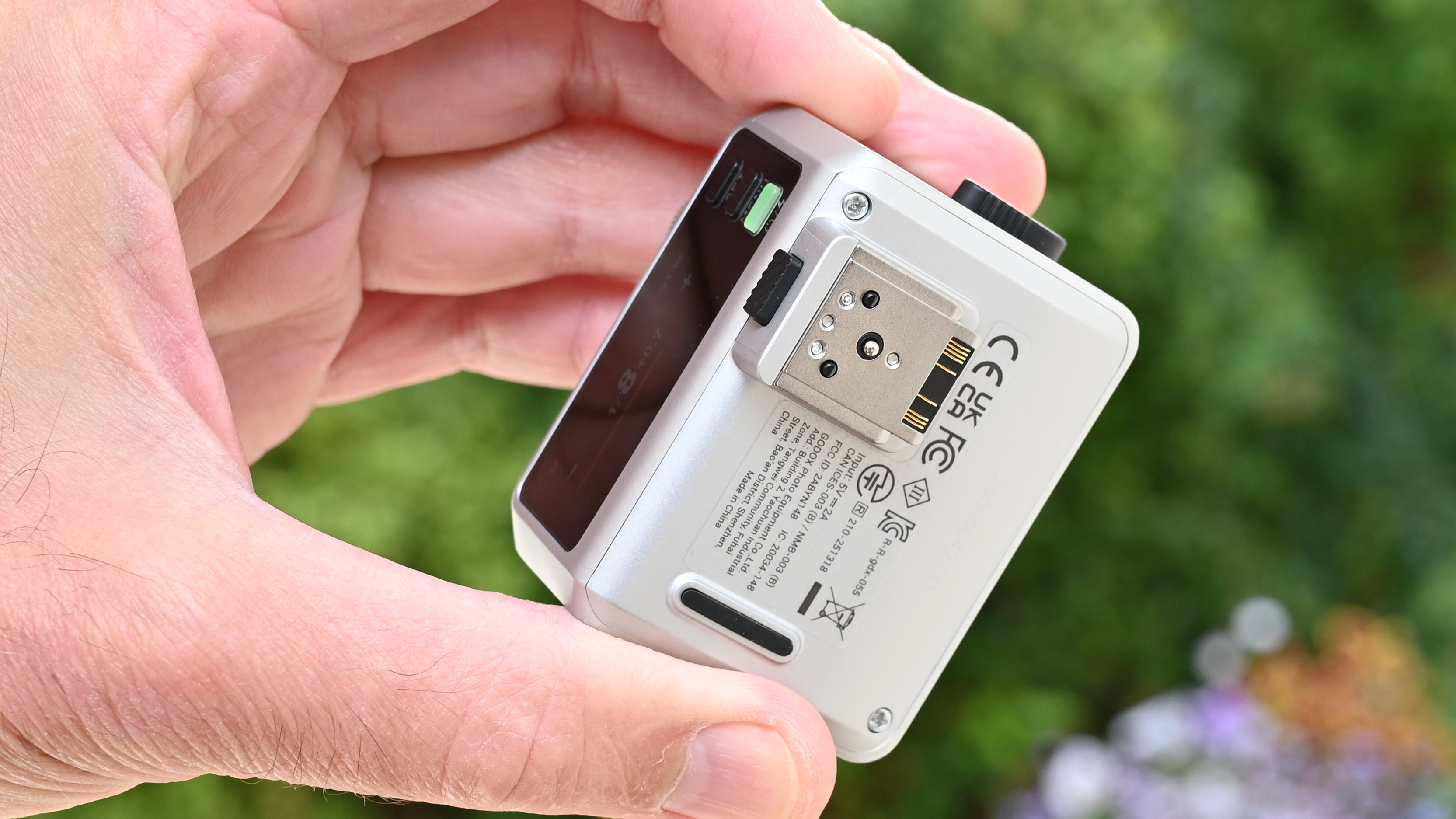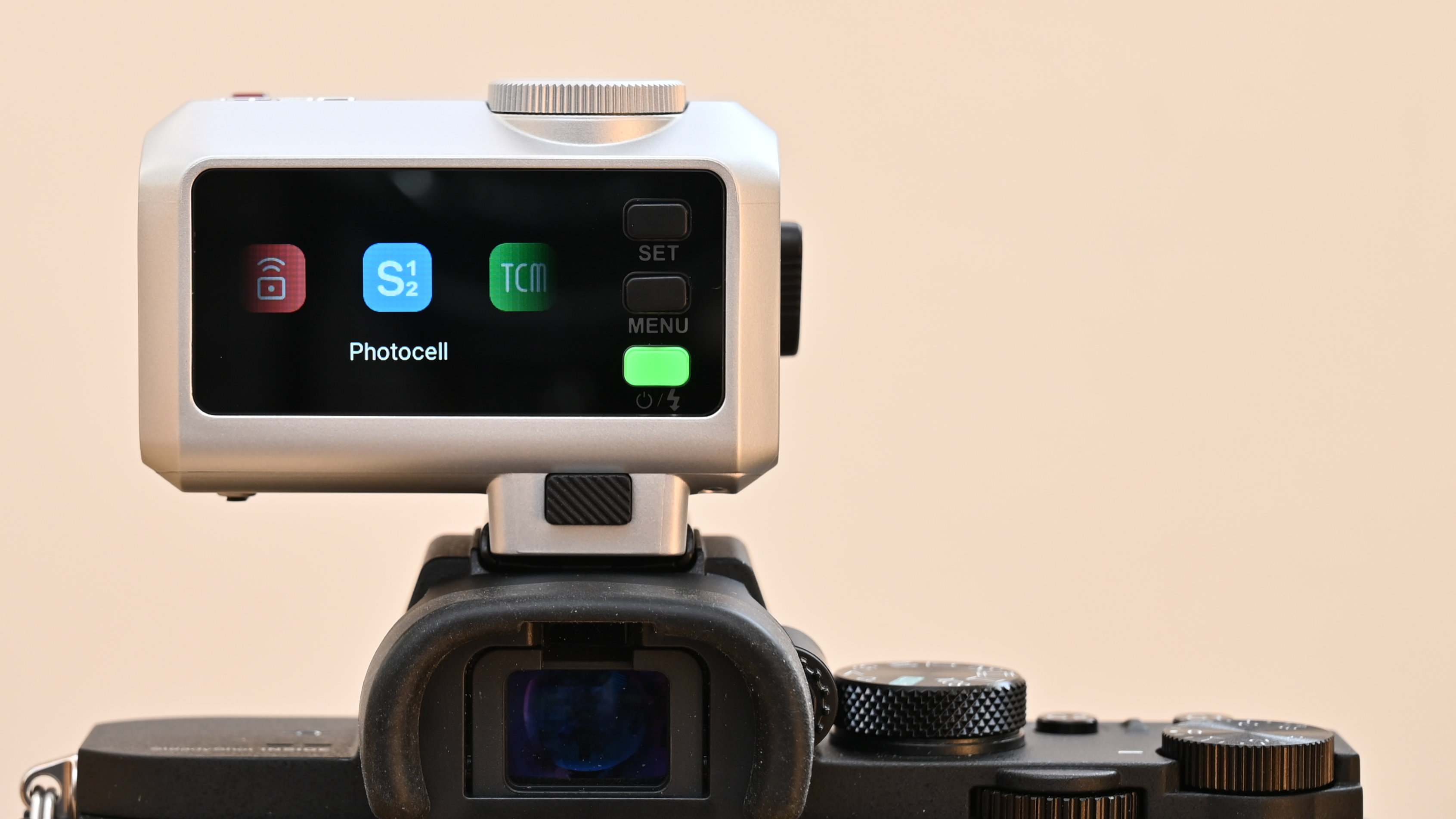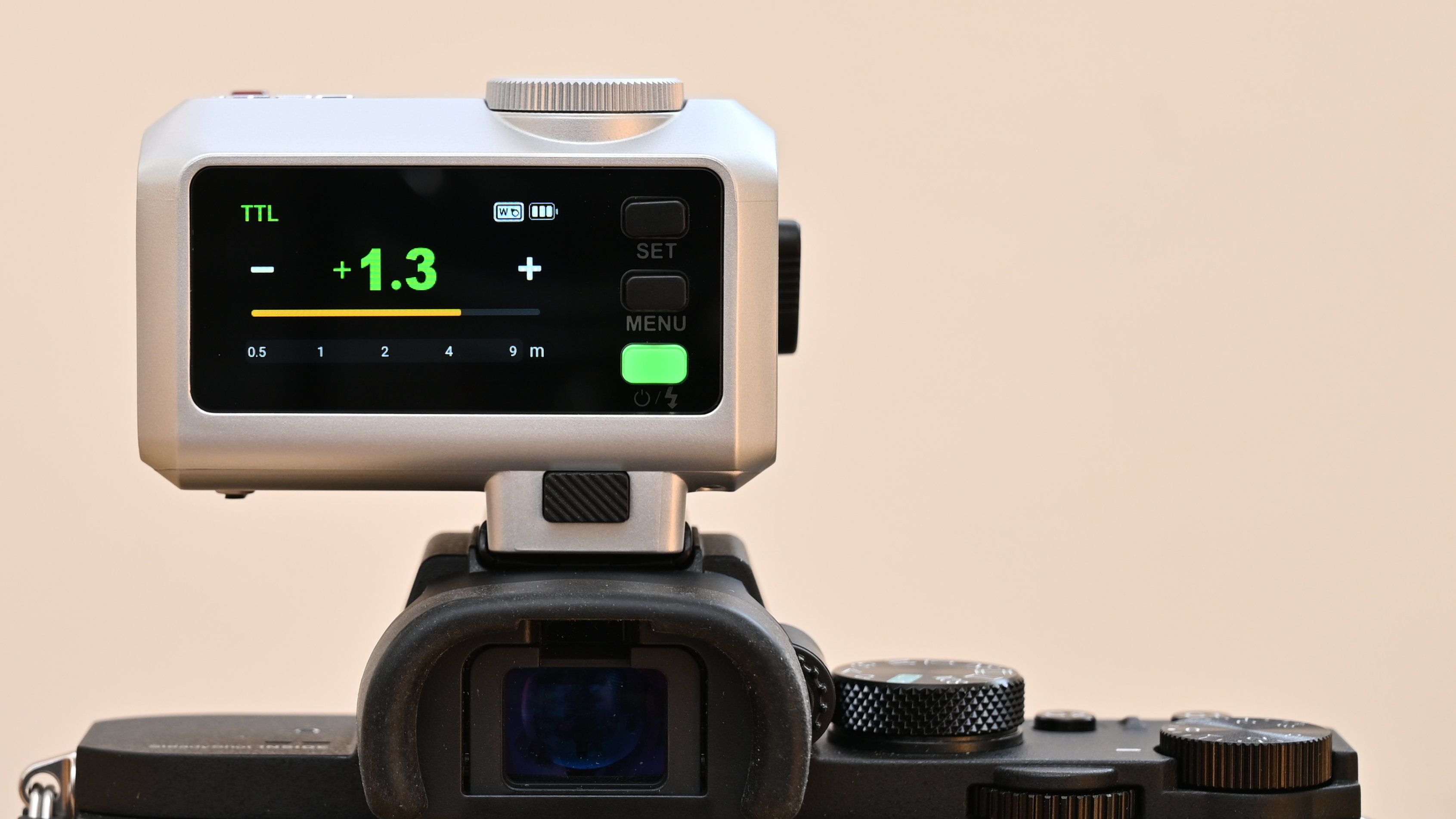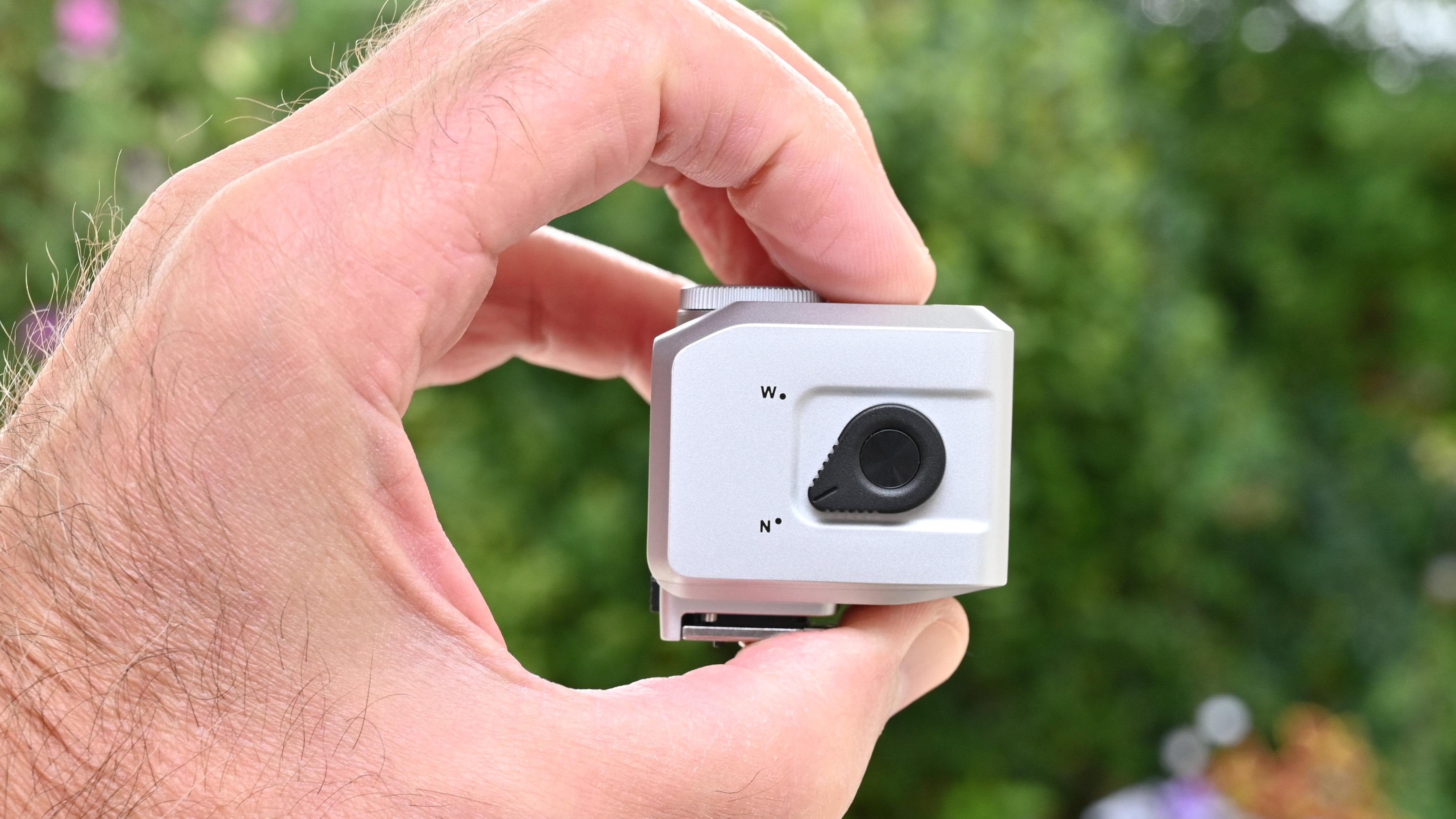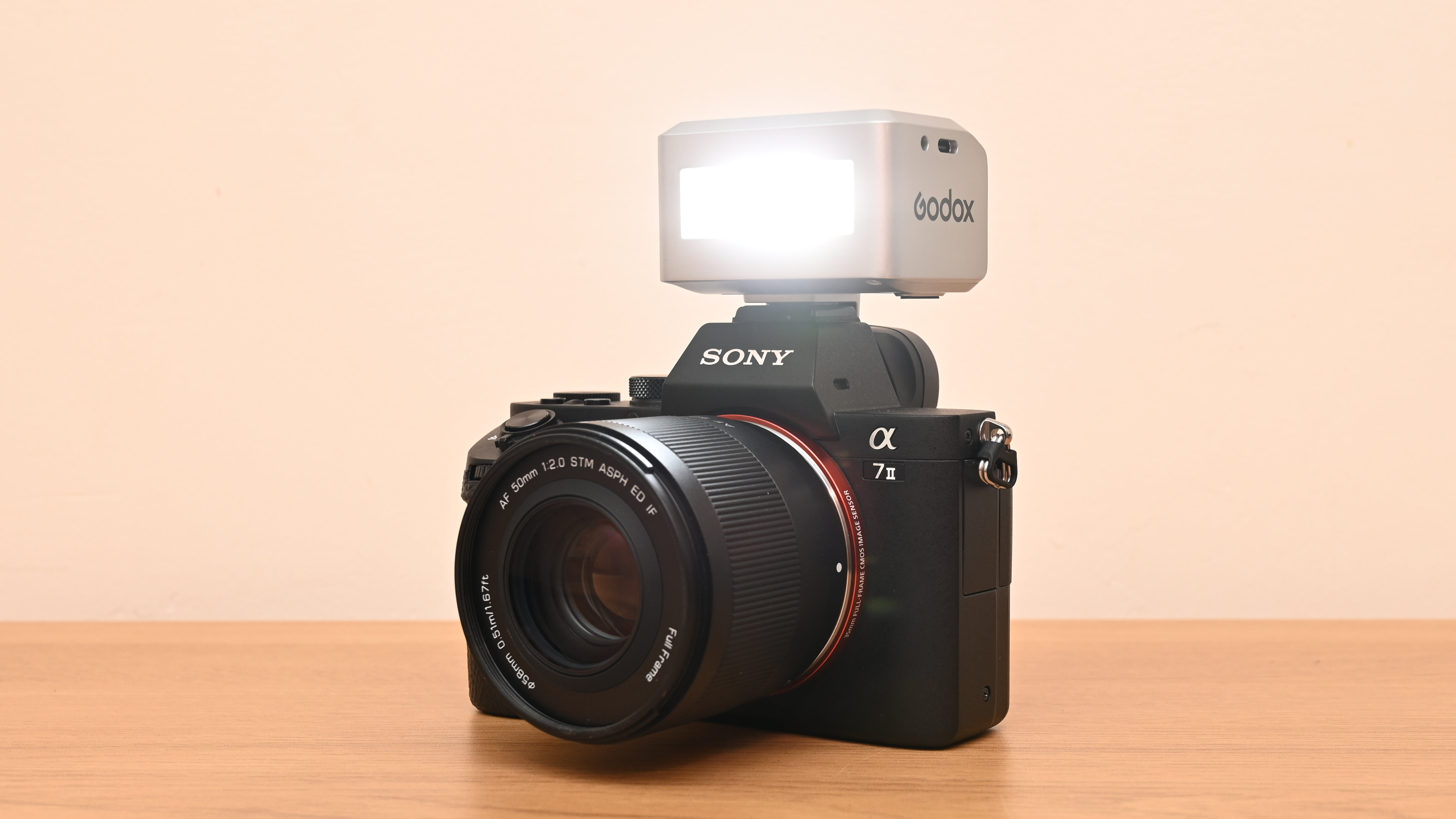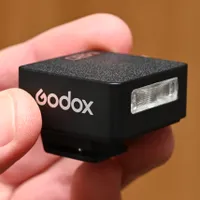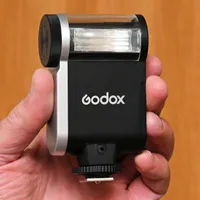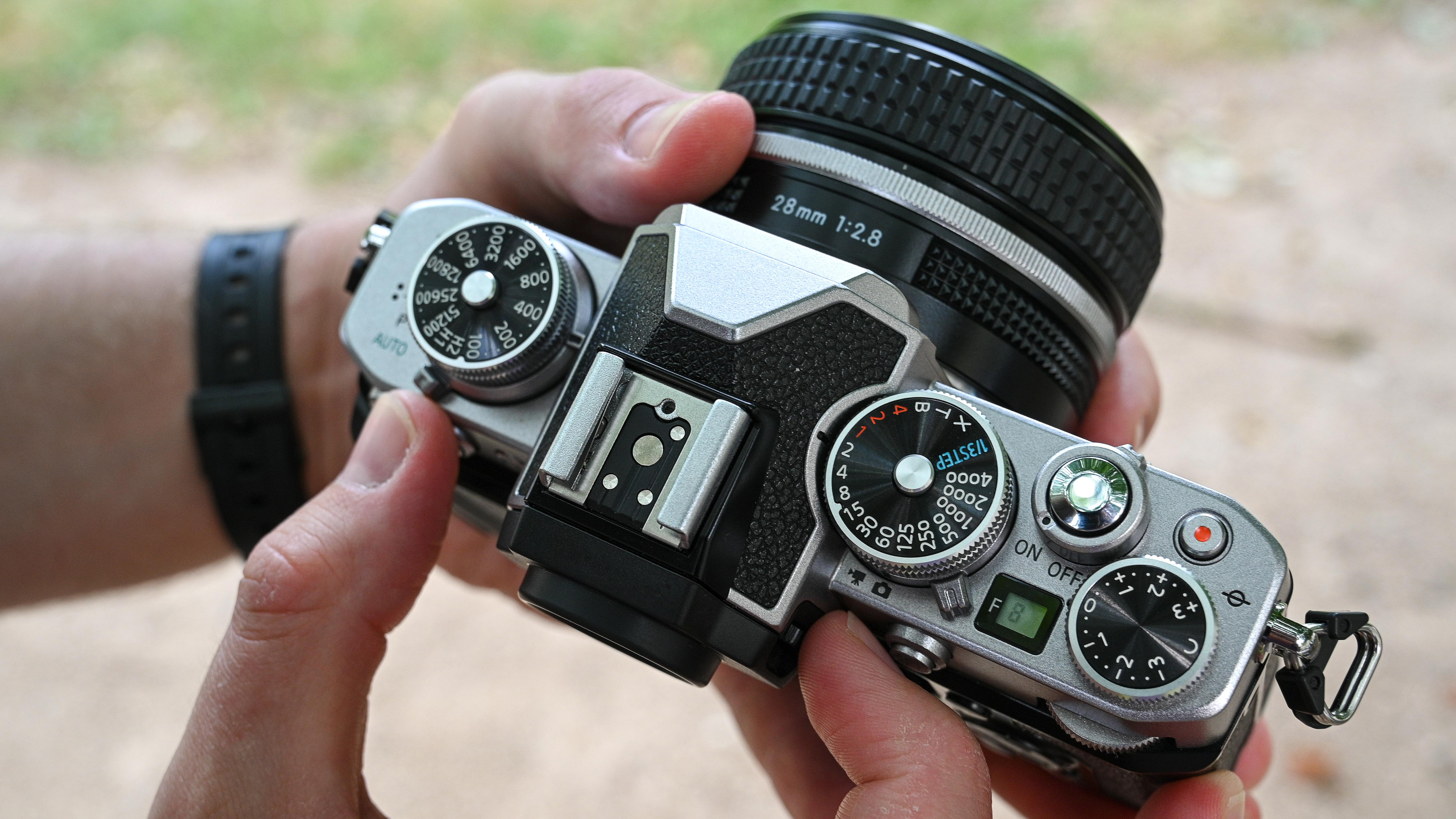Digital Camera World Verdict
I think it’s often good to downsize, and the Godox iT30 Pro is a classic case of miniaturization. I love that its compact and lightweight build makes it easy to take along for the journey, yet there’s a wealth of features and functions shoehorned into its diminutive casing. The maximum power output is rather modest and there’s no bounce nor swivel, but pretty much everything else is catered to in fine style.
Pros
- +
Compact and lightweight
- +
Wide-ranging flash modes
- +
Wireless master/slave
- +
Intuitive color touchscreen
Cons
- -
Modest maximum power
- -
Small flash tube
- -
No bounce/swivel
Why you can trust Digital Camera World
I’ll come straight out with it – I’m a big Godox fan when it comes to flash. A pair of Godox Ving V860III flashguns and a companion Godox XPro i-TTL RF wireless trigger has been my go-to flash setup for my Nikon Z system cameras over the last couple of years. I’ve also been impressed with the Godox V1, Godox V1 Pro and Godox V100 flashguns, all of which feature a round rather than rectangular flash tube. All of these rank as some of the best flashguns on the market, but they’re all powerful, full-sized affairs.
More recently, I’ve reviewed the Godox iM20 and Godox iM22, which are comparatively tiny, lightweight and simple, designed to fill in for the pop-up flash which is lacking in so many recent mirrorless cameras. However, they’re very basic, fully manual flashes with no dedication for varying camera systems. This iT30 Pro is a little larger but still very compact, while packing an exotic feature set and being available in dedicated versions to suit Canon, Fujifilm, Nikon, Olympus, Panasonic and Sony cameras. It’s also available in black or silver, to suit the color of your camera.
Godox iT30 Pro: Specifications
Sync | Hot shoe + socket |
Max output (Gn, ISO 100, m / ft) | 15 / 49.2 |
Bounce | None |
Manual Power Settings | 1/1 to 1/128 |
Auto flash exposure | Yes, TTL |
Batteries | Internal 7.4V 900mAh Li-ion |
Full power flashes | 560 flashes |
Wireless master/slave | RF master / slave + optical slave |
Dimensions | 65x46x47mm / 2.6x1.8x1.9in |
Weight (inc battery) | 120g / 4.3oz |
Godox iT30 Pro: Price
Godox flashes large and small all tend to be great value for money. The iT30 Pro weighs in at $75 / £67 / AU$145, which is very reasonable for a dedicated flashgun that includes a host of flash modes, wireless master and slave functions and even a color touchscreen. Sure, it’s relatively small and the maximum power output is a little meagre, but it’s super-handy for fill-in flash and can easily fit in a spare coat pocket.
Godox iT30 Pro: Design & Handling
I sometimes feel that flashguns are a bit like tripods. They’re really useful bits of kit but their size and weight makes them likely to be left at home if you’re in the mood for travelling light. The first thing you notice about the Godox iT30 Pro is that it’s not much bigger than a matchbox and really lightweight, measuring 65x46x47mm / 2.6x1.8x1.9in and weighing just 120g / 4.3oz. And that’s including a built-in, rechargeable 900mAh Li-ion battery. Like the best travel tripods, that makes it a flash that’s easy to take anywhere and everywhere, even when stowage space is at an absolute premium.
The small nature of the design does result in a physically small flash tube that sits relatively low in the camera’s hot-shoe. In some ways, it feels more like using a pop-up flash rather than a separate flashgun, and the quoted maximum power output of Gn 15 / 49/2 (ISO 100, m / ft) isn’t a whole lot more than that of some pop-up flashes. But that’s where the similarities end.
I’m frankly amazed that Godox has managed to shoehorn so many features and functions into this little flash. Often reserved for the highest echelon of camera manufacturers’ own-brand flashes, the iT30 Pro features a full range of first-curtain, second-curtain, TTL, manual, high-speed sync and even programmable multi (repeat / stroboscopic) flash modes. Indeed, the high-speed sync mode of the Sony dedicated flash that I’m testing doesn’t just top out at a shutter speed of 1/8,000th of a second, but is compatible with the 1/80,000th speed of a second global shutter.
Then there’s wireless sync. The flash can work as a slave in two optical modes, enabling it to be triggered from a master flash with or without pre-flash pulses. On top of that, it has a built-in 2.4GHz wireless transceiver that enables it to team up with other Godox flashes as both a master or slave, or to be fired remotely by a Godox wireless trigger, all with a range of up to 100m / 330ft.
The best camera deals, reviews, product advice, and unmissable photography news, direct to your inbox!
You might think that all these features and functions would make the little Godox tricky to use, with a cramped set of operating buttons. Another surprise, given the price point, is that it features a 2.8-inch color touchscreen that enables all the options to be accessed and adjusted with touch and drag simplicity. The interface is really well thought out and brilliantly simple and intuitive to use.
Another space-saver is that, while many flashguns come with the option of a diffusion panel that enables a softer quality of light and spreads the beam for ultra-wide-angle shooting, the Godox has one of these built-in. There’s a handy quick-access lever on the side with clearly marked N and W positions so you can engage the diffusion panel quickly and easily.
Everything’s powered from a built-in rechargeable Li-ion battery. The flash is supplied complete with a USB-C charging cable but typical of modern gadgets nowadays, you have to supply your own mains charger. When the battery is fully charged, it has sufficient stamina for 560 full-power flashes – many more at lower output levels. The only downside is that, unlike flashguns that run on regular batteries or slot-in Li-ion power packs, you can’t quickly swap the battery out for a spare if it runs flat while you’re shooting.
Godox iT30 Pro: Performance
Flash is often called ‘the most available light’ but that’s only true if you actually have a flashgun with you at the time. A key performance factor of the Godox iT30 Pro is that it’s compact enough to take anywhere, anytime. Performance is arguably a little limited in respect of the maximum output power, which worked out to be a little less than the claimed value in my tests. Bounce flash isn’t available anyway (which typically needs more power) but the power range is ample for short- to medium-range direct flash when using it as the main light source, and for fill-in flash on a bright, sunny day. Giving a nicely natural look to eyes in sunny-day portraiture is certainly within its remit, neatly avoiding eyes turning into black holes of deep shadow.


I’m used to fast recycling speeds from flashes that feature a Li-ion battery pack and sure enough, recycling times are pretty much instantaneous with the iT30 Pro, all the way from the minimum 1/128th power setting all the way up to 1/8th power. At 1/4, half-power and full-power settings, recycling speeds were still quick in my tests, at 0.4s, 0.7s and 1.5s respectively.
Syncing proved to be reliable, not only with the flash sitting in the hot-shoe of my Sony camera, but also in optical slave mode and wireless master/slave configurations. The same goes for hi-speed sync, enabling use of flash (albeit with reduced maximum power) at really fast shutter speeds.

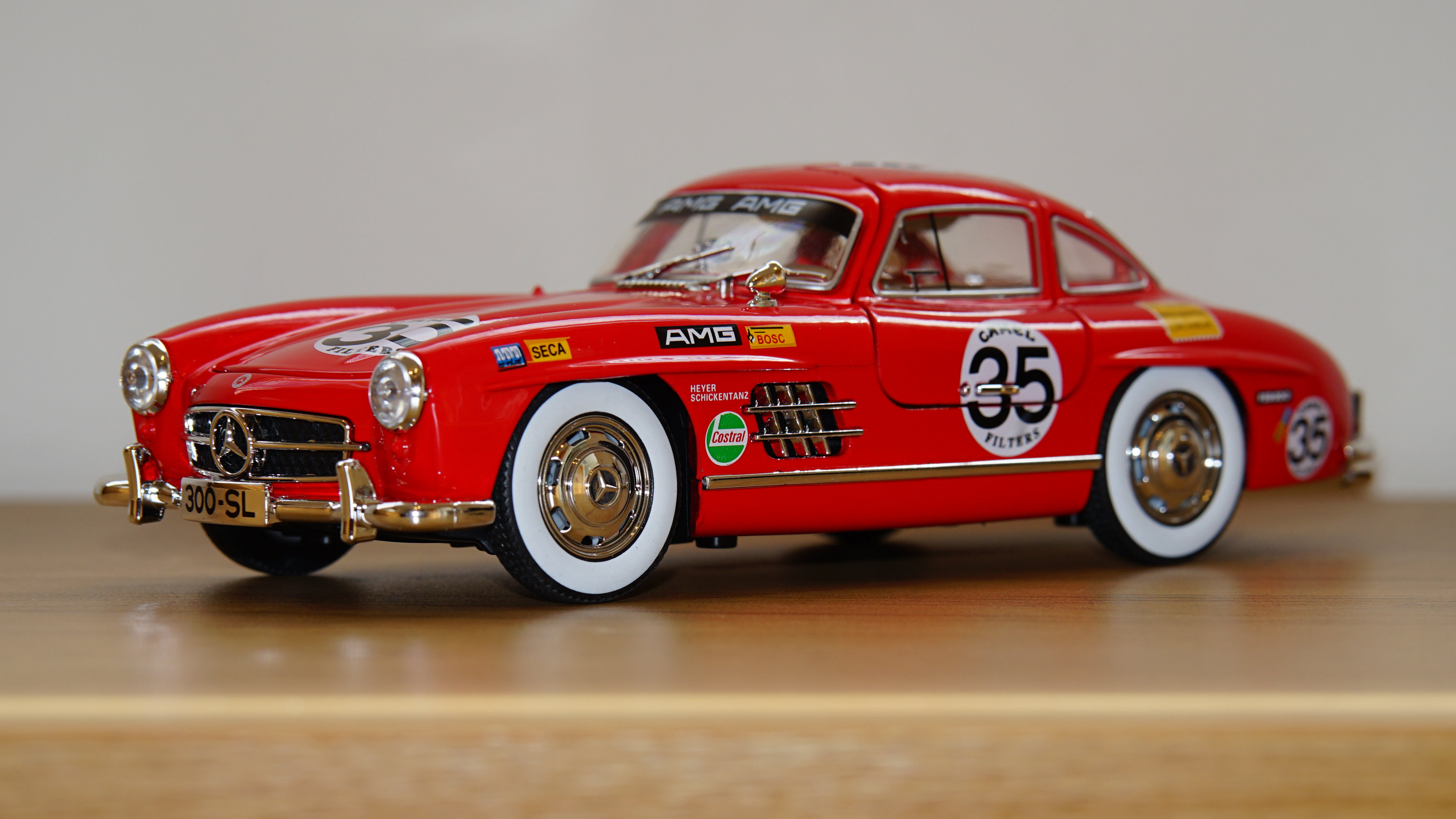
The built-in diffusion panel proved its worth for wide-angle shooting but had relatively little effect on the softness of light. To a certain extent, that’s only to be expected considering the physically small size of the flash tube, and that you’re not bouncing the light off a wall or ceiling to soften the blow. I found that engaging the diffusion panel knocked about 1EV step off the maximum output.
Godox iT30 Pro: Lab Results
We test all available features for each flashgun that goes through out labs. To test power output, we used a Sekonic flash meter placed at a distance of one meter from each flashgun. We check the complete range of manual power settings, in one-stop increments. Based on a sensitivity of ISO 100, the figures correlate directly with the Gn (Guide number) in meters. The results are double-checked by taking shots of a gray card with the appropriate lens apertures and using the camera’s histogram display in playback mode. This is done for flash zoom settings of 24mm, 50mm and 105mm (in full-frame terms), where available.
We also check the accuracy and consistency of electronic/intelligent TTL (Through The Lens) flash metering, where featured, and the speed with which each flashgun can recycle to a state of readiness after a full-power flash, using both Ni-MH and alkaline cells, or a Li-ion power pack where supplied.
Power output:
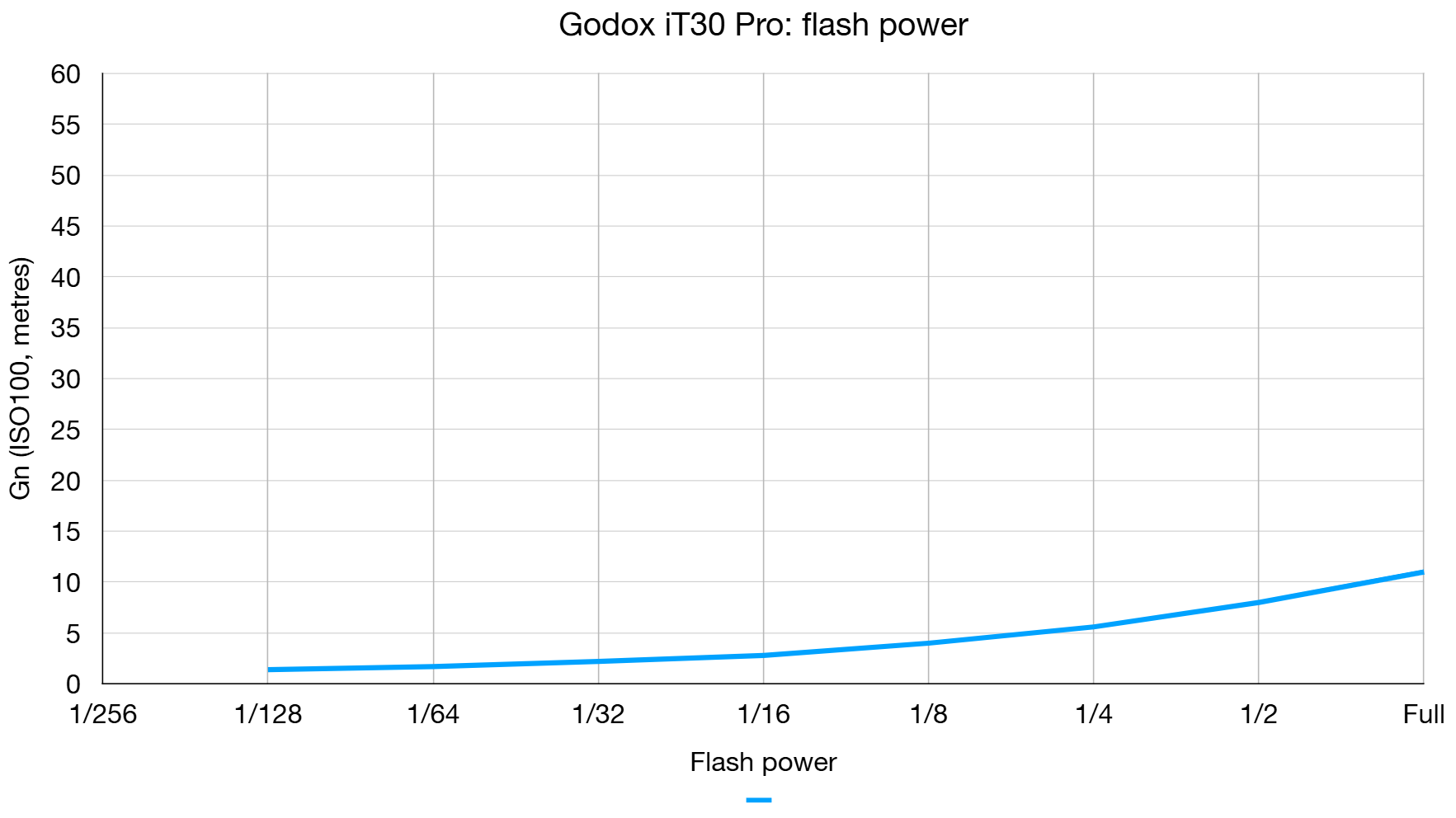
In my tests, maximum power output was almost a stop short of that claimed, equating to Gn 11, rather than Gn 15 (ISO 100, meters). From full power down to 1/32 power settings, each full stop gave an accurate equivalent reduction in light output, the reductions being a little less at the lowest f/64th and 1/128th power settings.
Recycle speed:
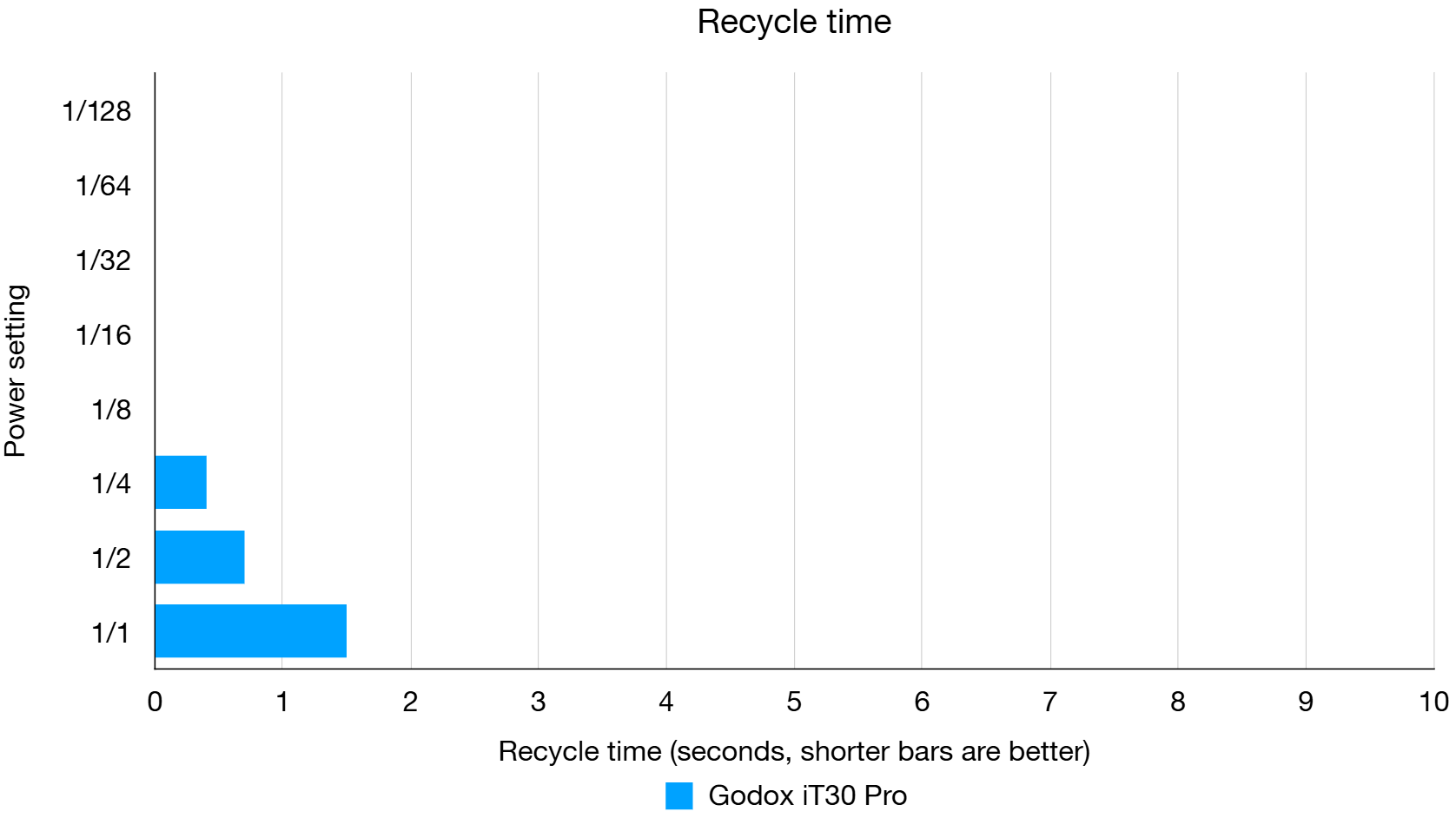
Recycle speeds are pretty much instantaneous all the way from the lowest power setting of 1/128th up to a comparatively strong 1/8th power setting. It’s only at 1/4 power that you start to notice a short delay of 0.4 seconds, rising to 0.7 seconds at half power output, and 1.5 seconds at the full-power setting. Even that’s pretty brisk for such a physically small flash.
Godox iT30 Pro: Verdict
Think feature-rich dedicated flashguns with built-in RF transceivers and you’re probably thinking of big, hefty affairs. I love that the Godox iT30 Pro manages to squeeze a full raft of top-end features, functions and flash modes into a relatively tiny and very lightweight package. It’s great for fill-in flash on a sunny day, as well as for use as the main lighting source indoors, at least for short to medium shooting distances. Sure, it doesn’t have the big maximum power output of chunky guns but it’s a brilliant little flash for when you want to travel light.
Features ★★★★★ | Smart features include full camera-specific dedication, built-in RF connectivity, programmable repeat flash mode and high-speed sync. |
Design ★★★★★ | It’s a triumph of design, delivering a highly advanced feature set in an incredibly compact package, complete with a rechargeable internal battery. |
Performance ★★★★☆ | The maximum power is rather modest and there’s no bounce / swivel facility but overall performance is very good. |
Value ★★★★★ | This little Godox is exceptional value for such a versatile, dedicated flashgun, especially when miniaturization generally comes at a high price. |
Alternatives
The Godox iM20 came to the market at the same time as the Godox iM22. They both have the same internals and control system, and cost the same price, but the iM20 is shorter and more squat in shape. They each cost around $34 / £32 / AU$80 and are ‘universal’ flashes with no camera brand dedication.
The Godox iA32 was also launched around the same time as the iM20 and iM22 but is a more sophisticated flash that includes a bounce head with greater maximum power, optical dual-mode slave functions and auto flash exposure, albeit with basic rather than TTL flash metering. Again, it’s a ‘universal’ fit and costs around $50 / £47 / AU$112.
Matthew Richards is a photographer and journalist who has spent years using and reviewing all manner of photo gear. He is Digital Camera World's principal lens reviewer – and has tested more primes and zooms than most people have had hot dinners!
His expertise with equipment doesn’t end there, though. He is also an encyclopedia when it comes to all manner of cameras, camera holsters and bags, flashguns, tripods and heads, printers, papers and inks, and just about anything imaging-related.
In an earlier life he was a broadcast engineer at the BBC, as well as a former editor of PC Guide.
You must confirm your public display name before commenting
Please logout and then login again, you will then be prompted to enter your display name.


